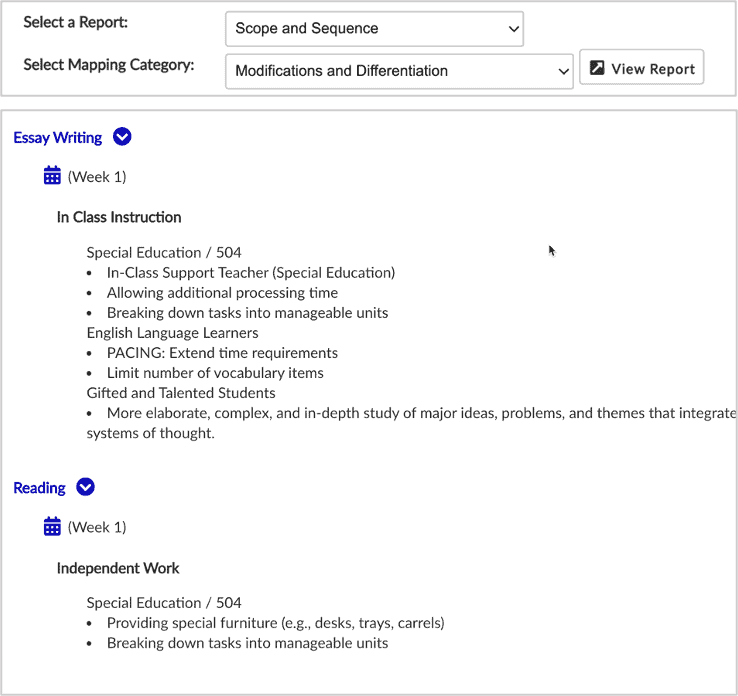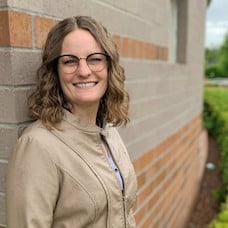- Figure 1 (below): Children 3 to 21 years old served under Individuals with Disabilities Education Act from 1976 to 2018
 Educators have a unique opportunity to explore innovative ways to teach all students, while leaders in government and education grapple with the factors contributing to this increase. According to the CDC, “Improved awareness, screening, diagnosis, and service accessibility may contribute to the increases seen” (Centers for Disease Control and Prevention, 2019).
Todd Rose’s Myth of the Average takes a metaphor of adjustable seats and applies it to the Universal Design for Learning principles. In his TED video, Todd, a high school dropout turned Harvard faculty member, explores what it means to design for the average student. He states that “because every single student has a jagged learning profile, it means that the average hurts everyone, even our best and brightest.” So what can educators do to tend to all of their students, while not focusing only on the average student? The answer is that educational best practices for students with special needs can extend to all students. This not only helps ease the stress of documentation but also creates a collaborative and innovative classroom environment.
We all know that documenting accommodations and modifications per an Individualized Education Programs (IEP), is not only essential to student success, it is the law. In fact, without proper documentation, one could be involved in a long, drawn-out legal process. So how can we incorporate best practices for students with special needs while finding time to document all necessary differentiation practices? By using a comprehensive curriculum mapping system, your teachers can customize their planning, generate detailed reports, and access thousands of academic standards. Now, documentation is no longer an additional task to complete, but an integral part of building your unit and lesson plans.
How can Atlas support documentation?
Standards
Atlas has a robust database of national, provincial, and specialty standards that are always up-to-date and easily accessible. To name a few that support students with special needs:
Educators have a unique opportunity to explore innovative ways to teach all students, while leaders in government and education grapple with the factors contributing to this increase. According to the CDC, “Improved awareness, screening, diagnosis, and service accessibility may contribute to the increases seen” (Centers for Disease Control and Prevention, 2019).
Todd Rose’s Myth of the Average takes a metaphor of adjustable seats and applies it to the Universal Design for Learning principles. In his TED video, Todd, a high school dropout turned Harvard faculty member, explores what it means to design for the average student. He states that “because every single student has a jagged learning profile, it means that the average hurts everyone, even our best and brightest.” So what can educators do to tend to all of their students, while not focusing only on the average student? The answer is that educational best practices for students with special needs can extend to all students. This not only helps ease the stress of documentation but also creates a collaborative and innovative classroom environment.
We all know that documenting accommodations and modifications per an Individualized Education Programs (IEP), is not only essential to student success, it is the law. In fact, without proper documentation, one could be involved in a long, drawn-out legal process. So how can we incorporate best practices for students with special needs while finding time to document all necessary differentiation practices? By using a comprehensive curriculum mapping system, your teachers can customize their planning, generate detailed reports, and access thousands of academic standards. Now, documentation is no longer an additional task to complete, but an integral part of building your unit and lesson plans.
How can Atlas support documentation?
Standards
Atlas has a robust database of national, provincial, and specialty standards that are always up-to-date and easily accessible. To name a few that support students with special needs:
- Social Emotional standards
- American Sign Language Content Standards
- English Language Proficiency Standards (ELP)
- English Language Development Standards (ELD)
- Figure 2 (left): Using standards flagging to prioritize standards
- Figure 3 (right): Using standards flagging to support grade-specific standards

 Teaching and Assessing
Every classroom has a variety of different learner profiles. In order to scaffold learning for all students when designing lessons and assessments, you can utilize both Bloom’s Taxonomy as well as the Depth of Knowledge Framework.
“You can use Bloom’s as a guide for teaching and designing instruction and Depth of Knowledge as a guide for developing skills and encouraging deeper thinking and learning.” Bray, B (2018) Bloom’s Taxonomy and Depth of Knowledge (DOK)
Teaching and Assessing
Every classroom has a variety of different learner profiles. In order to scaffold learning for all students when designing lessons and assessments, you can utilize both Bloom’s Taxonomy as well as the Depth of Knowledge Framework.
“You can use Bloom’s as a guide for teaching and designing instruction and Depth of Knowledge as a guide for developing skills and encouraging deeper thinking and learning.” Bray, B (2018) Bloom’s Taxonomy and Depth of Knowledge (DOK)
- Figure 4 (left): Armstrong, P. Bloom’s Taxonomy. Retrieved from https://cft.vanderbilt.edu/guides-sub-pages/blooms-taxonomy
- Figure 5 (right): Clickable widgets document Bloom’s Taxonomy as well as Bloom's Cognitive Levels

 Bloom’s Taxonomy, revised in 2001, differentiates according to levels of complexity, whereas Depth of Knowledge analyzes the alignment between standards and standardized assessments.
Atlas supports the use of both frameworks and allows for documenting and reporting for students that are unable to reach grade level standards.
Bloom’s Taxonomy, revised in 2001, differentiates according to levels of complexity, whereas Depth of Knowledge analyzes the alignment between standards and standardized assessments.
Atlas supports the use of both frameworks and allows for documenting and reporting for students that are unable to reach grade level standards.
- Figure 6 (right): Clickable widgets document Depth of Knowledge
 Instructional Reporting
Having numerous options in identifying differentiation is key to capture accommodations. Another way Atlas provides assistance is through Instructional Reporting. Schools can create categories of the accommodations and modifications that they deem most relevant in their school or district and create dropdown categories that are clickable and reportable. Running reports is an easy way to save, print, and file for teachers’ and administrative records.
Instructional Reporting
Having numerous options in identifying differentiation is key to capture accommodations. Another way Atlas provides assistance is through Instructional Reporting. Schools can create categories of the accommodations and modifications that they deem most relevant in their school or district and create dropdown categories that are clickable and reportable. Running reports is an easy way to save, print, and file for teachers’ and administrative records.
- Figure 7 (left): Clickable widgets document accommodations

- Figure 8 (below): Reports on accommodations
 Whether your goal is to document curriculum, record accommodations and modifications, or generate reports, using Atlas as a comprehensive curriculum mapping system allows your teachers to customize their planning and curriculum to better suit the needs of all students. Documentation is no longer a task to complete, but an integral part of building your unit and lesson plans, leaving teachers and schools with certainty that their benchmarks are being measured while giving equitable opportunities for students to meet or exceed their potential.
Whether your goal is to document curriculum, record accommodations and modifications, or generate reports, using Atlas as a comprehensive curriculum mapping system allows your teachers to customize their planning and curriculum to better suit the needs of all students. Documentation is no longer a task to complete, but an integral part of building your unit and lesson plans, leaving teachers and schools with certainty that their benchmarks are being measured while giving equitable opportunities for students to meet or exceed their potential.
 Kelly Robinson
Passionate about curriculum, equity, and scaffolded learning, Kelly, a member of our Implementation Team, supports schools by strategically planning out their process based on the school’s initiatives, goals, and needs of their students and community. She also outlines the setup of their site, keeping in mind the specific reporting needs of their school, and provides technical training.
Kelly graduated from Concordia University with her master’s degree in teaching with an emphasis in mathematics and health education. She worked as a public educator for eight years, three in a self-contained behavioral intervention classroom, two in a middle school, focusing on English Language Development, and three at the high school level. She joined the Atlas team to further her passion for curriculum, using the reporting functions to provide equitable learning opportunities.
Kelly Robinson
Passionate about curriculum, equity, and scaffolded learning, Kelly, a member of our Implementation Team, supports schools by strategically planning out their process based on the school’s initiatives, goals, and needs of their students and community. She also outlines the setup of their site, keeping in mind the specific reporting needs of their school, and provides technical training.
Kelly graduated from Concordia University with her master’s degree in teaching with an emphasis in mathematics and health education. She worked as a public educator for eight years, three in a self-contained behavioral intervention classroom, two in a middle school, focusing on English Language Development, and three at the high school level. She joined the Atlas team to further her passion for curriculum, using the reporting functions to provide equitable learning opportunities.Check out our upcoming events that support Equity in Education!
Racial Equity in Education: Beginning the Conversation
 In this monthly group, we will get together to collaborate, learn about, and discuss racial equity and diversity in schools.
In this monthly group, we will get together to collaborate, learn about, and discuss racial equity and diversity in schools.


